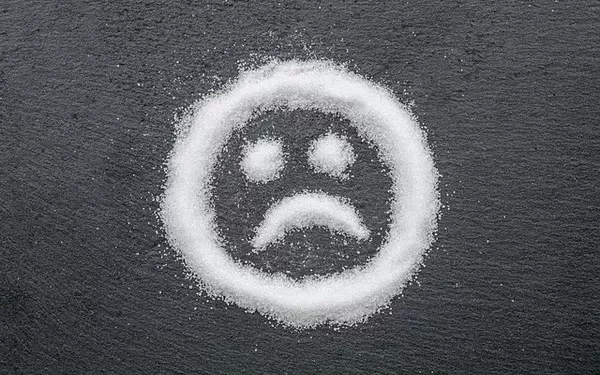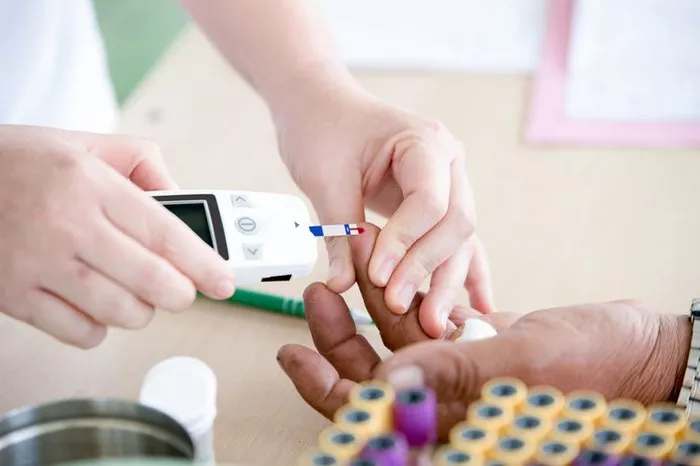Reactive hypoglycemia, also known as postprandial hypoglycemia, refers to a condition where blood sugar levels drop significantly after eating. This occurs due to an exaggerated insulin response following a meal, leading to symptoms such as dizziness, shakiness, and irritability. Effectively managing reactive hypoglycemia involves understanding its causes, recognizing symptoms, and implementing strategies to stabilize blood glucose levels. This comprehensive guide will explore the causes of reactive hypoglycemia, its symptoms, and detailed management strategies to help individuals maintain optimal blood sugar levels and overall health.
Understanding Reactive Hypoglycemia
Reactive hypoglycemia typically occurs within a few hours after eating, particularly meals high in carbohydrates. It is crucial to understand the underlying mechanisms to manage this condition effectively.
1. Pathophysiology of Reactive Hypoglycemia
Reactive hypoglycemia is characterized by a rapid drop in blood glucose levels after eating. The primary mechanisms involved include:
Excessive Insulin Secretion: After a carbohydrate-rich meal, the body may release an excessive amount of insulin, leading to a rapid decrease in blood glucose levels.
Insulin Sensitivity: Some individuals have heightened insulin sensitivity, which can cause a more pronounced drop in blood glucose levels post-meal.
Delayed Gluconeogenesis: Impaired gluconeogenesis, the process of producing glucose from non-carbohydrate sources, can contribute to low blood sugar levels after eating.
2. Causes and Risk Factors
Several factors can contribute to reactive hypoglycemia:
Dietary Patterns: High carbohydrate meals, particularly those rich in refined sugars, can lead to rapid fluctuations in blood glucose levels.
Insulin Sensitivity: Individuals with high insulin sensitivity or those with insulin resistance may experience more pronounced blood sugar drops.
Medical Conditions: Certain medical conditions, such as diabetes or metabolic syndrome, can increase the risk of reactive hypoglycemia.
Tip: Understanding the triggers and underlying causes can help in developing an effective management plan.
Recognizing Symptoms of Reactive Hypoglycemia
Identifying the symptoms of reactive hypoglycemia is essential for timely intervention and management. Common symptoms include:
1. Early Symptoms
Dizziness: A feeling of lightheadedness or unsteadiness.
Shakiness: Trembling or shaking, particularly in the hands.
Sweating: Excessive sweating, often accompanied by a clammy feeling.
Irritability: Unexplained irritability or mood swings.
2. Severe Symptoms
Confusion: Difficulty thinking clearly or concentrating.
Fatigue: Persistent tiredness or weakness.
Blurred Vision: Difficulty seeing clearly or experiencing visual disturbances.
Loss of Consciousness: In severe cases, loss of consciousness or fainting may occur.
Tip: Regular monitoring and awareness of symptoms can help in managing and preventing severe episodes.
Managing Reactive Hypoglycemia
Effective management of reactive hypoglycemia involves a combination of dietary adjustments, lifestyle changes, and, in some cases, medical intervention. Here’s a detailed approach:
1. Dietary Modifications
Dietary changes are crucial in managing reactive hypoglycemia and preventing blood sugar drops.
Balance Carbohydrates with Protein and Fat: Consuming meals that include a balance of carbohydrates, proteins, and healthy fats can help stabilize blood glucose levels. For example, pair whole grain bread with lean protein and avocado.
Choose Low Glycemic Index (GI) Foods: Foods with a low glycemic index release glucose slowly into the bloodstream, preventing rapid spikes and drops in blood sugar. Examples include legumes, nuts, and non-starchy vegetables.
Avoid Sugary Foods and Drinks: Refined sugars and sugary drinks can cause rapid fluctuations in blood glucose levels. Opt for whole foods and minimize consumption of high-sugar items.
Eat Smaller, More Frequent Meals: Instead of large meals, eat smaller, more frequent meals throughout the day to maintain stable blood glucose levels. This helps prevent large swings in blood sugar.
Tip: Work with a registered dietitian to develop a personalized meal plan that addresses your specific needs and preferences.
2. Lifestyle Changes
Incorporating certain lifestyle changes can help manage reactive hypoglycemia effectively.
Regular Physical Activity: Engaging in regular exercise can improve insulin sensitivity and overall glucose metabolism. However, avoid vigorous exercise immediately after eating, as it may affect blood sugar levels.
Maintain a Healthy Weight: Achieving and maintaining a healthy weight can help improve insulin sensitivity and reduce the risk of hypoglycemia.
Stay Hydrated: Drink plenty of water throughout the day to support overall health and metabolic function.
Tip: Incorporate moderate-intensity exercise, such as brisk walking or cycling, into your routine to enhance insulin sensitivity.
3. Monitoring and Adjustments
Regular monitoring and adjustments are key to managing reactive hypoglycemia effectively.
Monitor Blood Glucose Levels: Regularly check your blood glucose levels, especially after meals, to identify patterns and adjust your diet and medication as needed.
Adjust Medication: If you are taking medications that affect insulin or glucose levels, consult with your healthcare provider to adjust dosages or timing.
Keep a Food Diary: Maintain a food diary to track your meals, symptoms, and blood glucose levels. This can help identify triggers and make necessary adjustments.
Tip: Use a continuous glucose monitor (CGM) if available, as it can provide real-time data on your blood glucose levels and help you make timely adjustments.
4. Emergency Management
Knowing how to respond during a hypoglycemic episode is crucial for effective management.
Carry Fast-Acting Carbohydrates: Always have a source of fast-acting carbohydrates, such as glucose tablets, fruit juice, or hard candy, to quickly raise blood sugar levels in case of an emergency.
Seek Medical Attention if Needed: If symptoms are severe or do not improve with self-management, seek medical attention promptly.
Tip: Inform family, friends, and colleagues about your condition and how they can help if you experience a hypoglycemic episode.
Medical and Professional Support
In addition to self-management strategies, seeking professional support can provide valuable guidance and help in managing reactive hypoglycemia effectively.
1. Consult with a Healthcare Provider
Regular consultations with your healthcare provider are essential for managing reactive hypoglycemia.
Review Treatment Plans: Discuss your symptoms, dietary habits, and glucose monitoring results with your healthcare provider to review and adjust your treatment plan.
Evaluate Underlying Conditions: Ensure that any underlying medical conditions, such as diabetes or metabolic syndrome, are properly managed and treated.
Tip: Keep track of your appointments and follow-up regularly to ensure optimal management of your condition.
2. Work with a Registered Dietitian
A registered dietitian can provide personalized guidance on managing your diet and preventing reactive hypoglycemia.
Develop a Customized Meal Plan: Work with a dietitian to create a meal plan that balances carbohydrates, proteins, and fats while addressing your specific needs.
Receive Nutritional Education: Gain insights into making healthier food choices and managing your diet effectively.
Tip: Schedule regular sessions with a dietitian to adjust your meal plan as needed and address any dietary concerns.
Preventive Strategies
Preventing reactive hypoglycemia involves proactive measures to maintain stable blood glucose levels and overall health.
1. Identify and Avoid Triggers
Identify foods and situations that trigger reactive hypoglycemia and make necessary adjustments to avoid them.
Track Food and Symptoms: Use a food diary to track your meals and symptoms, helping you identify patterns and avoid specific triggers.
Adjust Meal Timing: Adjust meal timing and composition to avoid large fluctuations in blood glucose levels.
Tip: Consult with a dietitian to identify and address potential triggers in your diet and lifestyle.
2. Educate Yourself and Others
Educating yourself and those around you about reactive hypoglycemia can improve management and support.
Learn About Symptoms and Management: Educate yourself about the symptoms and management strategies for reactive hypoglycemia.
Inform Family and Friends: Make sure family and friends are aware of your condition and know how to help in case of an emergency.
Tip: Consider joining support groups or online communities for individuals with reactive hypoglycemia to share experiences and gain additional insights.
See also: How Long Does False Hypoglycemia Last?
Conclusion
Managing reactive hypoglycemia requires a comprehensive approach that includes dietary modifications, lifestyle changes, regular monitoring, and professional support. By understanding the causes and symptoms of reactive hypoglycemia, making appropriate dietary and lifestyle adjustments, and seeking medical guidance, individuals can effectively manage their condition and maintain optimal blood glucose levels. Proactive management and preventive strategies can help reduce the risk of hypoglycemic episodes and improve overall health and well-being.
Related topics:
What Are the 4 Symptoms of Type 1 Diabetes?
Transforming Diabetes Interventions into Sustainable Community Pharmacy Programs


























